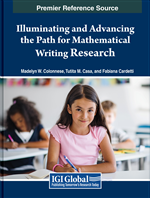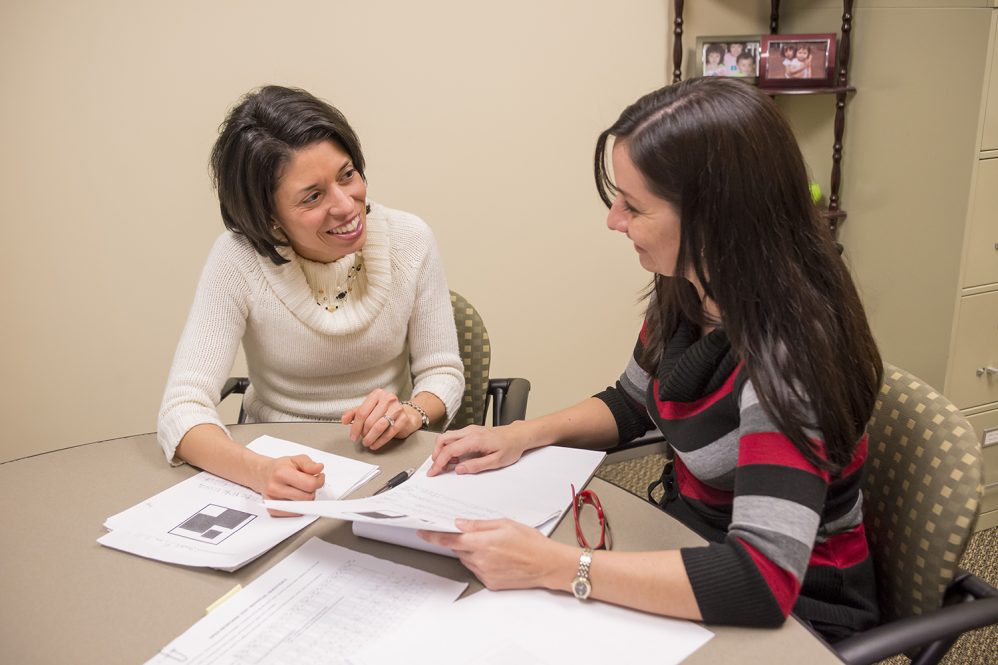In our recurring 10 Questions series, the Neag School catches up with students, alumni, faculty, and others throughout the year to offer a glimpse into their Neag School experience and their current career, research, or community activities.
Tutita Casa, an associate professor of elementary mathematics education, recently co-published “Illuminating and Advancing the Path for Mathematical Writing Research” with IGI Global. Additionally, in 2022, she contributed to “Mathematics Teacher: Learning and Teaching PK-12” published by the National Council of Teachers of Mathematics (NCTM).
Casa’s primary focus lies in utilizing writing to enhance mathematical learning. Rather than emphasizing step-by-step mathematical procedures, she explores methods to help students comprehend and grasp mathematical concepts through oral and written discourse. Casa advocates for students to “write about math” as opposed to merely “writing mathematically.” According to her, this approach allows students to truly understand mathematics rather than memorizing strategies and formulas without comprehension.
In her role as the director of a National Science Foundation-funded project, Casa united the Elementary Mathematical Writing Task Force, a group comprising educators with diverse expertise in mathematical education, writing education, English language learners, special education, gifted education, assessment, and curriculum.
When she first joined the Neag School, Casa served as the co-principal investigator with Kathy Gavin, the principal investigator, for Project M2: Mentoring Young Mathematicians for six years. During this time, she developed the Student Mathematician Discourse Model, supporting mathematical communication through writing for kindergarten through second-grade students. Casa’s contributions also extend to Project M³: Mentoring Mathematical Minds, an extension for students in grades three through five, showcasing her dedication to advancing mathematical education.
In this feature, we learn more about Casa’s new book and the importance of mathematical writing in the classroom.
Q: Where did the inspiration for this book come from? How long was this in the works for?
A: In response to a gap in the literature regarding mathematical writing, I led a task force funded by the National Science Foundation to define it (Task Force on Conceptualizing Elementary Mathematical Writing: Implications for Mathematics Education Stakeholders, #1545908). Our aim was to encourage informed decisions about positioning elementary students to write mathematically for enhanced learning. This book serves as an update on recent national and international efforts, addressing the critical need for a clear definition in the context of discourse defined by the National Council of Teachers of Mathematics in 1991.
Q: How did you connect with the other authors, Madelyn Colonnese and Fabiana Cardetti?
A: Maddie and Fabiana collaborated with me on editing and co-authoring chapters in the book. Maddie, a former Neag School Integrated Bachelor’s/Master’s teacher preparation student and research assistant during Project M2, contributed to our work on developing curriculum units that promote mathematical writing in kindergarten through second grade. I later served as her doctoral advisor, guiding her dissertation on supporting mathematical writing in elementary grades. Fabiana, a professor in UConn’s Department of Mathematics specializing in mathematics education, provided a valuable mathematical perspective. Both Maddie and Fabiana were members of the Elementary Mathematical Writing Task Force, ensuring our collective efforts have enduring positive implications for elementary education.
I am excited about the opportunity the book presents to significantly advance work in mathematical writing. We must ensure students engage in writing that fosters their mathematical reasoning for researchers to gain a deeper understanding of what it affords and continue to provide guidance for best practices. — Tutita Casa
Q: How did you research this book and find people to interview?
A: The chapters in this book represent current endeavors in mathematical writing. We contacted some people we knew from previous projects, such as other Elementary Mathematical Writing Task Force members, to invite them to contribute to the book and contact others. We also relied on social media to spread the word. The call resulted in a diverse group of contributions.
I also collaborated with Lauren Haggis, whom I met as a result of being invited to present an asynchronous workshop on mathematical writing as part of the South Australia Department for Education’s 5th Literacy Summit in 2022, addressing the theme “Learning to Write, Writing to Learn – World-Class Teaching for All.” After my workshop, Lauren continued to develop a genre map for teachers across all grades and content to better understand and support their students’ mathematical writing.
Q: How do you feel now that this book is completed?
A: I am excited about the opportunity the book presents to significantly advance work in mathematical writing. We must ensure students engage in writing that fosters their mathematical reasoning for researchers to gain adeeper understanding of what it affords and continue to provide guidance for best practices. Lauren’s policy-level efforts are one example of the exciting ways we can support teachers and students that will open opportunities for novel research to continue to give students a personal voice in their mathematical reasoning through writing. Maddie and Fabiana’s chapter represents the positive impact of allowing students to write mathematically and understand what that entails.
Q: What did you learn through the writing process that you did not expect? How does this book compare to other research efforts you have been involved in?
A: Reading the chapters allowed me to realize how other educators, researchers, and practitioners are advancing mathematical writing in the elementary grades. Students’ mathematical writing represents a more personal perspective on their understanding, which is a more concrete representation compared to oral discourse. Although previous research endeavors focused on talk, I am excited that my current efforts more directly attend to each student’s voice and ways of knowing mathematics. All students are mathematicians, including our very youngest ones. I’m honored to be in a position to help provide an avenue for them to engage in and express their reasoning.
As someone who has always loved math and makes sense of the world using a mathematical lens, what excites me the most is the process of figuring out an answer. — Tutita Casa
Q: What is the importance of mathematical writing in the classroom?
A: As someone who has always loved math and makes sense of the world using a mathematical lens, what excites me the most is the process of figuring out an answer. Although we tend to focus on mathematical content, or the “stuff” that students learn, like addition and fractions, mathematical joy centers on reasoning, justification, proof, argumentation, sense-making, etc. Because mathematical writing foundationally involves mathematical reasoning, it presents another opportunity for students to engage in this foundational process. Uniquely, students also learn and utilize symbols beyond letters, words, and sentences to communicate their ideas, such as the equal sign, and visual representations like graphs that can only be expressed in writing.
 Q: What do you hope educators take away from this book? What is its purpose?
Q: What do you hope educators take away from this book? What is its purpose?
A: I want educators to realize that elementary students can reason at high levels. Because literacy is emphasized in the elementary grades in the U.S., I hope teachers recognize how mathematical writing can bolster both content areas.
Q: How did your personal experience as an educator and receiving your Ph.D. from the Neag School in 2004 prepare you for conducting this research and discovering the discrepancies in mathematical writing?
A: I’ve always had such high regard for how my students think. Throughout my career, I have begun to recognize that not all students have an equitable voice in a noisy classroom. Mathematical writing gives all students a say and enlightens teachers to increase their expectations of their students.
My doctoral dissertation focused on three case studies of teachers who approached oral discourse in various ways. It helped me realize that it is challenging to study something when it may be happening in only some settings. I recognize the importance of collaborating with practitioners to meet their needs and supporting them in implementing pedagogy to continue to learn how to improve practice.
Q: What brought your attention to the underutilization of mathematical writing?
A: When we began work on Project M2, there needed to be more guidance in the literature about how we could support elementary students engaging in this practice. That continued to be the case, and NSF saw the value of defining the notion of mathematical writing to help advance scholarship in this area. Albeit it was limited, some of the guidance noted mathematical writing, but it focused on the answer or computational steps. Mathematics educators value students’ expression of reasoning through talk, and students must have opportunities to express their thinking in writing beyond the answer. There’s so much more value beyond one number.
Q: What is the relevance of this research, given the current academic climate?
A: We continue to hear about “gaps” and “delays” regarding U.S. students’ understanding of mathematics. I believe the pandemic helped highlight the need for elementary students to reason mathematically instead of solving math problems in ways someone else taught them. Taking the time to reason has the potential to deepen students’ understanding of any content, and mathematical writing is a medium to support this process. When students learn what constitutes a quality piece of mathematical writing, such as including a claim and evidence to back it when writing an argument, their teachers will be better able to formatively assess their learning.
To learn more about mathematical writing and Tutita Casa’s research, email her at tutita.casa@uconn.edu.



